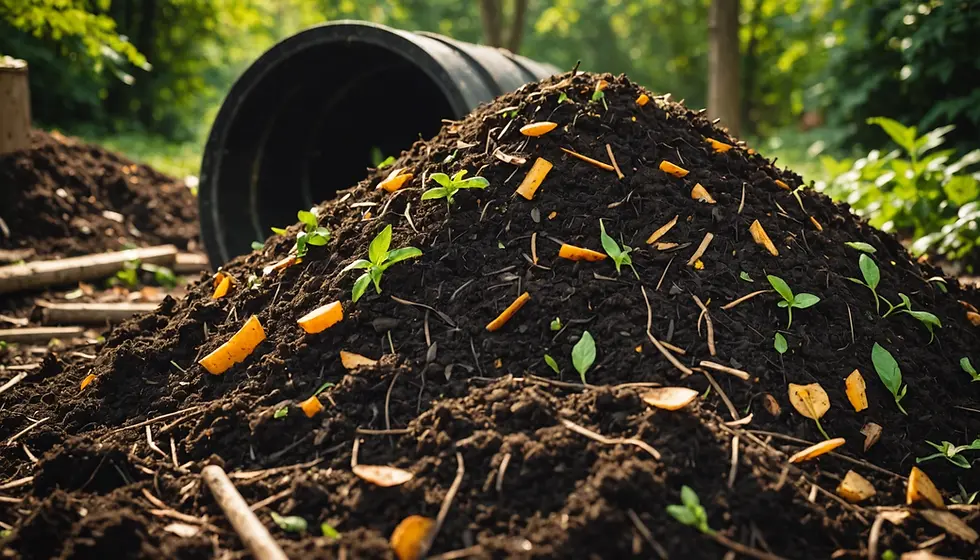New Year, New Garden: Accessible Gardening & Design Tips to Get Started
- gpgardendesign
- Jan 6
- 3 min read
As the New Year unfolds, it's the perfect time to breathe new life into your garden. Whether you're a seasoned green thumb or a complete beginner, making gardening accessible and enjoyable can be a rewarding goal for 2024. Here are some practical tips and design ideas to help you get started and maximise your outdoor space.
1. Embrace Accessibility in Your Garden
Creating an accessible garden ensures that everyone can enjoy the pleasures of gardening, regardless of age or physical ability. Here are a few ways to enhance accessibility:
Raised Beds: Raised garden beds are easier on the back and joints, making planting and weeding more comfortable. They also improve drainage and can be aesthetically pleasing.
Wide Paths: Ensure your garden paths are wide enough for wheelchairs or walkers, and use non-slip surfaces to enhance safety.
Seating Areas: Incorporate benches or seating areas throughout your garden. This will allow for breaks and create inviting spots to enjoy the view.

2. Start Small and Build Gradually
If you're new to gardening or have limited time, start small to avoid feeling overwhelmed. Here are a few beginner-friendly projects:
Container Gardening: Use pots and containers to grow flowers, herbs, or vegetables. They are easy to manage and can be moved around to suit your space and sunlight needs.
Herb Garden: A small herb garden can be a great starting point. Herbs like basil, mint, and parsley are easy to grow and add a fresh touch to your meals.

3. Plan Your Garden Design
Before diving into planting, take time to plan your garden layout and design. Consider the following:
Sketch Your Layout: Draw a simple plan of your garden space, noting where you want to place plants, paths, and seating areas. This helps visualize the final result and ensures a cohesive design.
Seasonal Interest: Choose plants that bloom in different seasons to keep your garden vibrant year-round. For example, snowdrops and hellebores for winter, tulips for spring, and asters for autumn.

4. Focus on Low-Maintenance Options
To keep gardening enjoyable and stress-free, opt for low-maintenance plants and features:
Perennials: These plants return year after year, reducing the need for replanting. Examples include lavender, hostas, and coneflowers.
Mulching: Use mulch to suppress weeds and retain moisture in the soil, cutting down on watering and weeding tasks.
Self-Watering Pots: Invest in self-watering containers that regulate the water supply for your plants, making it easier to maintain them.
5. Make Use of Vertical Space
Maximize your garden space by going vertical. Here are some ideas:
Vertical Gardens: Install wall planters or trellises for climbing plants like ivy, beans, or clematis. This not only saves space but also adds a lush, green backdrop to your garden.
Hanging Baskets: Use hanging baskets for trailing plants like petunias or ferns. They add height and dimension to your garden design.
6. Connect with Nature Mindfully
Gardening is not just about beautifying your space; it’s a way to connect with nature and relax. Make your gardening experience more fulfilling by:
Creating a Wildlife-Friendly Garden: Plant native flowers to attract bees and butterflies, and consider adding a birdbath or feeder to invite feathered friends.
Mindful Gardening: Take moments to enjoy the process of gardening, from feeling the soil in your hands to listening to the rustle of leaves. It’s a great way to reduce stress and boost well-being.
Conclusion
The New Year is an ideal time to start fresh and make your garden a more accessible and enjoyable space. By implementing these tips, you can create a garden that not only looks beautiful but also brings joy and relaxation throughout the year. Happy gardening!
_edited.png)





Comentarios